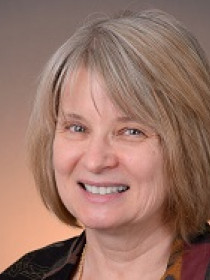
Sharon L. Harlan
Connect with Sharon
About Sharon
Harlan’s research explores the socially unequal impacts of climate change, focusing on exposure to excessively hot outdoor and indoor temperatures as a significant and increasingly critical threat to human health and well-being in cities. She studies the environmental factors, such as lack of vegetation, open spaces, and air conditioning, which produce elevated risks for people in low-income and minority neighborhoods. Her approach is interdisciplinary, integrating social theories about the historical production of environmental injustices with data and models from the ecological, geospatial, and health sciences. She also led the development of a longitudinal survey in the Phoenix, Arizona metropolitan area on environmental attitudes and behaviors and has published widely on these topics as well as the epidemiology of heat and the development of a socio-spatial heat vulnerability index.
Contributions
The Quest for Climate Justice in an Unequal World
In the News
Publications
Discusses how disparities in power, wealth, and privilege are central to understanding the causes and impacts of climate change. Argues for grassroots-driven adaptations and envisions a worldwide transition to renewable, safe energy, with underrepresented groups taking part in negotiated shifts.
Argues that the urban heat island is an unintended consequence of humans building upon rural and native landscapes, changing land cover and land use patterns in ways that raise temperatures in cities. Suggests that affluent whites were more likely to live in vegetated and less climatically stressed neighborhoods than low-income Latinos in Phoenix, Arizona.
Identifies clusters of neighborhoods with the highest vulnerability scores and argues that a large proportion of heat deaths occurred among people (including homeless persons) who lived in the inner cores of several cities and along an industrial corridor.
Estimates an outdoor human thermal comfort index as a function of local climate variables collected in 8 diverse city neighborhoods during the summer of 2003 in Phoenix, Arizona. Argues that urban heat island reduction policies should specifically target residential areas with fewer social and material resources to cope with heat and take into account equitable distribution and preservation of environmental resources, such as trees, parks, and open spaces.
Discusses health concerns related to global climate change, urban heat islands, and air pollution in cities, as well as the health co-benefits that are realized when cities adopt mitigation and adaptation policies for climate change.